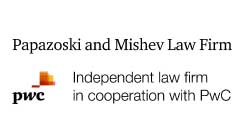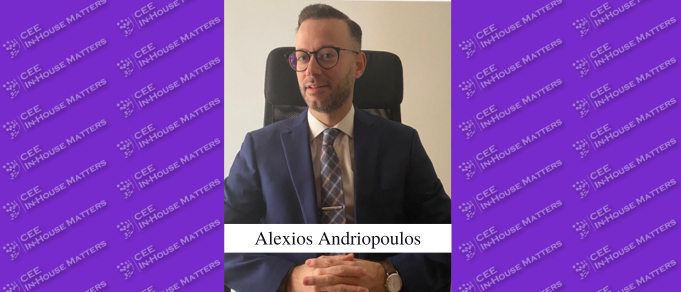With an average of 30 transactions in the last five years, Delivery Hero has developed its own, internal, dedicated M&A team. We sat down with Director and Head of M&A Legal Deniz Ozkan Ergun to learn more about how her team came to be and how they manage their pipeline of projects.
CEELM: Let’s start by introducing the Delivery Hero dedicated M&A legal team.
Ergun: The journey of Delivery Hero changed over the years. When I initially joined, it was to work in the corporate/M&A department. About a year later, things changed: with Delivery Hero being a hyper-growth company, it engages in a significant volume of M&A work, with a very high turnaround. So, the team was restructured to develop a larger dedicated M&A team and remove some of the hybrid overlaps it had with corporate. We still have a very close relationship with the central corporate legal team and sit under the same roof of the Corporate, M&A Legal, and Legal Tech division with them.
We currently have two team leads in the M&A legal department. My part of the team focuses primarily on Latin America and Middle East transactions, whereas my colleague focuses more on Asia-Pacific and Europe. With the volume of M&A work, it made sense to internalize much of it, which, of course, ultimately also meant reducing legal costs.
In total, ten people report directly to my co-lead colleague and me. It is all very similar to a law firm structure, with two Directors at the top serving as overseers, followed by Senior Legal Counsels as the second-highest positions and frequent transaction leaders. After that comes mid-level staff, junior colleagues, and, finally, legal assistants. Depending on the size of the deal, we assign teams to transactions as we best see fit. Together with my co-lead, we focus on supporting and growing our team members and help them navigate Delivery Hero processes. Depending on the deal and complexity, either of the M&A legal heads also gets involved heavily in the drafting, negotiating, and execution phases.
CEELM: Can you give us a sense of this volume?
Ergun: Looking at our M&A legal dashboard – we have closed around 150 transactions since 2017, 40 of which were in 2021 alone, and some 15 this year already. These include 100% acquisitions, as well as minority investments, convertible loans, sales, and joint ventures. Our work focuses on acquisitions of entire companies and shares, investments such as asset acquisitions or convertible loans, divestments of assets and shares, joint venture work, and dedicated venture capital investments - through Delivery Hero Ventures, focusing on early-stage start-ups. Larger-scale investments often happen via Delivery Hero SE, our holding entity.
CEELM: At what stage do you get involved in the deals themselves?
Ergun: Unlike external advisors, we are a dedicated team – which means that we become part of the deal pretty early on – usually since the first commercial discussions take place. Here, we mainly support on ad-hoc matters and the initial overview of the deal, to help draw the framework of information sharing (e.g., drafting NDAs) as well as structuring the deal. As time goes by, we get more involved, especially as we start working on term sheets. Ultimately, our M&A philosophy is holistic, so we tend to comment on commercial matters as well. We question the rationale of the deals, weigh in on the entire picture, and try to add value as much as possible – on all levels of operation.
CEELM: Can you give us an average timeline for a transaction?
Ergun: It depends – sometimes we have to act very quickly, because the market we operate in is very competitive, and it is not always possible to engage in protracted discussions about strategy and planning. We must try and produce a realistic timeline, provide our strategy team with inputs, and figure out what is realistic and what isn’t – often, very quickly. Still, I can say that it takes us, on average, three to four months to complete a transaction, depending on the commercial negotiation part. It is rare that any extensions are made on account of legal workstreams – we mainly focus our efforts on red flags and key topics, as well as post-merger topics (we have a dedicated post-merger integration team as well). The M&A legal team is in the lead from drafting and finalizing the term sheet, through due diligence and long-form contract negotiating (which usually run in parallel), up until completion of the transaction. We support our post-merger integration team and functional teams involved in the deal, such as the tax and finance teams, for a smooth transition.
CEELM: You mentioned having a dedicated dashboard earlier. Which tools do you use to help you in your work?
Ergun: Our focus is on automating processes and documents as much as possible, to increase efficiency and reduce costs. We engage in transactions all around the globe, meaning we must ensure that the knowledge we gain working in one region is accurately and promptly applied to working in another. M&A has quite a high number of standardized approaches that are jurisdictionally specific and, indeed, common – meaning that we must ensure that information is shared quickly.
We use different tools and resources as the M&A legal team and as part of the larger Delivery Hero central legal team, such as document, contract, and spend management platforms and overviews. In the M&A legal team, we have a dashboard we built ourselves where we can reach all tools, overviews, lists, templates – basically anything that we use. Our M&A legal dashboard helps us safekeep and disseminate access to our knowledge banks which contain useful templates like NDA agreements or SPA clauses. When it comes to template contracts, we use them more as guidance than rigid templates – it is still pretty difficult to create a uniform template that would work in every M&A deal. All our previous work helps us here, as we build this knowledge base onward. Whenever we find ourselves on the sell-side, which is less frequent, we engage external data room service providers. I expect this part to get internalized in the future.
Finally, as an in-house team, we spend a lot of time working on administrative matters and are points of contact for M&A-related information. This means making sure we discuss all relevant issues with all relevant stakeholders, ensuring we stay up to date on organizational structures, as well as on business updates and external service provider approaches. For all of these cross-functional collaborations, we have descriptive documents which we access via our dashboard, and which come in useful.
CEELM: How do you choose external counsel when needed?
Ergun: If we have a standard M&A transaction before us that includes due diligence work – especially if it is in a foreign jurisdiction – we engage externals. There are, of course, cases where we do most of the work ourselves, and we try to, as much as we can, do everything on our own. Our legal staff is well-versed in English law, and we know what we’re looking for in each transaction. Indeed, we relish each opportunity to enlarge our knowledge base – it is both an opportunity for growth and for reducing costs. For certain jurisdictions, we have law firms with which we have long-standing relationships. Still, we make sure to get free quotes from at least three law firms, enabling us to make our final call in a more detailed way. We spend a lot of time making sure we get the service we paid for. Ultimately, this call depends on the type of the transaction and if we wish to go with someone we know, or if we want to try someone new out.
In situations when we have never worked in a given market in the past, we, quite literally, ask around. Delivery Hero has quite a few dedicated teams, so we try and talk to them and see if they have had any experience – our antitrust team, corporate team, tax team, even our strategy and IT teams.
CEELM: How do you split the workload between in-house and external counsels?
Ergun: Often, we try to do as much as possible in-house. We almost always do the term sheets ourselves and, if we have any jurisdiction-specific questions, we reach out to externals, but we undertake the drafting and the finalization work. Of course, for due diligence work, we engage external counsels because they have more jurisdictional knowledge. For the long-form documents, we also tend to engage externals for the drafting part and, depending on our capacity and how fast we need to move, we take the driver’s seat and get their support. We prefer to be in the lead in negotiations as well. Sometimes, we like to have a team member from the external law firm present at negotiations to pitch in and help out. Other times, to get over the finish line in time, we engage external teams more. Finally, we need support with closing work almost all the time, because closing takes part at the target level and jurisdiction. Recently, while acquiring a controlling stake in Glovo, we had a dedicated law firm that helped us out in Spain, with only one member of our team being sent over to Barcelona to be present for the closing and to coordinate efforts.
This article was originally published in Issue 9.10 of the CEE Legal Matters Magazine. If you would like to receive a hard copy of the magazine, you can subscribe here.






















